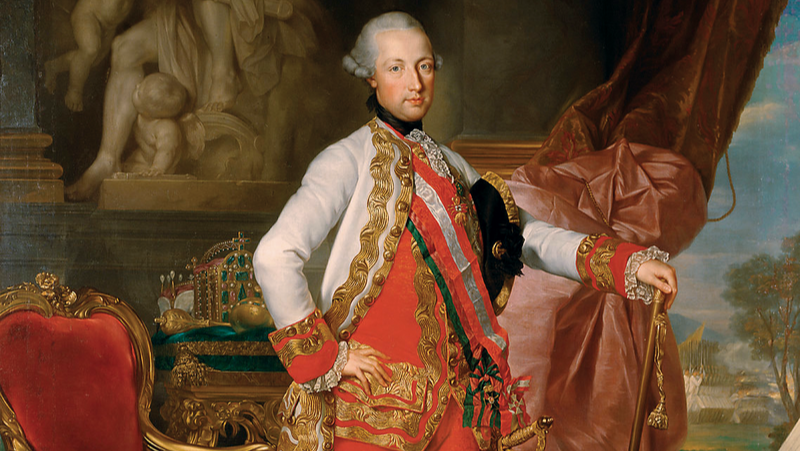In an extremely rare discovery, the Faculty of Humanities the Eötvös Loránd University (ELTE) and the Eötvös Loránd Research Network announced the unearthing of a first-century-AD Roman doctor and his tools. Researchers at the ELTE, in collaboration with the Jász Museum, discovered the tomb of the doctor using a preliminary magnetometer field survey about 49 miles (80km) from Budapest, near the city of Jászberény.
This finding demonstrates how far the influence of the Roman Empire extended. In fact, under the name Pannonia, the present-day western part of Hungary had been under Roman rule as early as 35 BC under Octavian, who then became Rome’s first Emperor under the more salient name of Augustus in 14 AD. The easternmost parts of historical Hungary were later (106 AD) organised as the Roman province of Dacia, which lasted until 271 AD.
Rome as a Civilisational Force
There is a myth, to be dispelled, that the Romans were always cruel conquerors. In truth, those who lived under the rule of the Caesars had plenty autonomy, be it in the public or private sector of society. It was that rationality and pragmatism of Roman law, which regulated regulated the lives of the conquered peoples, that structured Western culture as is evident from a host of historical, cultural, political, and societal elements.
Roman law collectively disappeared in the West after the deposition of the Emperor Romulus Augustulus in 476,
despite the fact that the Roman Senate sporadically continued to operate up to the beginning of the seventh century. Although it would be codified in Byzantium by the Emperor Justinian in his Corpus iuris civilis in 529, it would remain unknown in the West until the eleventh century.[i] It was during this period, that Gratian, in his Concordia discordantium canonum (commonly referred to as the Decretum),[ii] and canon lawyers thereafter, began to expand on the notion of the juridical terms.[iii]
Their exegesis of Roman law permitted them to ‘review and regularise laws and develop generally recognised standards for legal procedure’[iv] in order to resolve dilemmas such as, the validity and right of a serf marrying a free person, the right of self-governance of ecclesial institutions, and the like. Gratian’s harmonious work, as well as those of the glossators, became the watershed event when ‘canon law developed around a new theory of justice, a theory resting on the assumption of moral equality.’[v]
Roman Law in Hungary
Surprisingly, notwithstanding St Stephen’s close relations with the Byzantine, because of his adaptation of (Western) Christianity into his kingdom, the embodiment of Roman law was non-existent.
It was not until the thirteenth century when Hungarian students began to attend the University of Bologna, where Gratian and the glossators taught, that Roman jurisprudence began to shape Hungarian law. According to studies, there was even a separate ‘Hungarian nation’ (natio Hungarica) at that university with about eighty students from the Magyar Kingdom attending the lectures of the glossators.[vi]
Other Hungarian students studied canon law in Paris and became acquainted with the works of Roman jurists, like Gaius (110-179 AD?) and Ulpian (c. 170–228? AD). A few studied law at the universities of Padua, Oxford, and Cambridge, while others continued to go to universities abroad under the Angevin kings (1308-1387). It is also quite likely that the first university in Hungary, established at Pécs, also had a faculty that formed its pupils in Roman law.
Martyn Rady holds that Hungarian law derived from the interplay of Romano-canonical law, statute, written instruments, and court judgments,
as can be seen by its vocabulary: udvar (court); törvény (a law); and billog (a judge’s seal).[vii]
The impact of Roman jurisprudence was much less marked in the royal statutes and decrees (ius scriptum). At the same time, certain principles of Roman public law (ius publicum Romanum) can be traced, for example, in references to the fulness of power (plenitudo potestatis), serving as a justification for the preponderance of royal power at the time of the Anjou dynasty and subsequently during the reigns of King Sigismund (1387-1437) and King Matthias (1458-1490).[viii]
A case in point to highlight his was the decree of 25 January 1486, titled Decet reges et principes, issued by Matthias, which was an attempt at a systematic codification of statute law. It was, apparently, the first law of the kingdom of Hungary published in print—not to be followed for several decades by any printed law book in the country.[ix]
According to the medieval scholar János M. Bak, the legal-political philosophy of the Matthias, or rather, those of the jurists at the royal court who formulated the document, is presented in the extensive preamble of the Decet. It opens with a reference to the Roman legal commonplace about arma et leges[x]
and argues for the pre-eminence of good institutes rather than onerous power.
Roman law, explains Rady, also contributed to the formulation of customary law in Hungary, as early as the thirteenth century. It was described by Stephen Werbőczy in 1517 in the extensive law code known as the Tripartitum. As Werbőczy explained, the publication of the Tripartitum was intended to make the law more certain—its text was customised by actual use, in the same way as the statute laws of the kingdom were adjusted as a consequence of court practice and of errors in their transmission. Customary law and its institutions were abolished by the Holy Roman Emperor Joseph II in the 1780s, who opted to rule more by decree. Nevertheless, despite the transition towards statute law and its governance in our present times—and not just in Hungary—the basics of a rational judicial configuration and legislative deliberation in decision making came from Roman law.
[i] The discovery or rediscover of Justinian’s Code, i.e., Roman law is dated to 1076 at the Placitum of Marturi (present-day Poggibonsi, Italy). Cfr. L. Cambi Schmitter, ‘Placitum (judicial assembly) at Marturi (Poggibonsi) (1-24 March 1076),’ trans. Alison Creber, in Academia.edu, (Translation_Placitum_at_Marturi_1076_pre.pdf), accessed 26 October 2022.
[ii] Corpus Iuris Canonici-Decretum Gratiani, (ed., Emil Friedberg), Leipzig, 1879, D. I, d.a.c. 1.
[iii] They were also known as ‘glossators’, given the pattern for a treatment of canon law and of the collections of Justinian’s Code about the beginning of the twelfth century in the Bologna school of Roman law. See ‘Glosses and Glossators of Canon Law’, in Christian Classics Etheral Library, (https://www.ccel.org/s/schaff/encyc/encyc04/htm/ii.xii.ii.htm), accessed 1 May 2023.
[iv] J. Porter, ‘Gratian’s Decretum’, in The Nature of Customary Law: Legal, Historical and Philosophical Perspectives. Cambridge, Cambridge University Press, 2009, 84.
[v] Lary Siedentop, Inventing the Individual: The Origins of Western Liberalism. Cambridge, The Belknap Press, 2014, 216.
[vi] Gábor Hamza, ‘Roman Law and the Development of Hungarian Private Law Before the Promulgation of the Civil Code of 1959’, in Fundamina, January 2014, 383-4 (https://www.researchgate.net/publication/317450596_Roman_law_and_the_development_of_Hungarian_private_law_before_the_promulgation_of_the_Civil_Code_of_1959), accessed 1 May 2023.
[vii] Martyn Rady, Customary Law in Hungary: Courts, Texts, and the Tripartium. Oxford, Oxford University Press, 2015, 1-2.
[viii] Hamza, 384.
[ix] János M. Bak, ‘Tradition and Renewal in the Decretum Maius of King Matthias’, 1 (http://renaissance.elte.hu/wp-content/uploads/2013/09/Janos-M.-Bak-Tradition-and-Renewal-in-the-Decretum-Maius-of-King-Matthias.pdf), accessed 1 May 2023.
[x] The leges et arma formula derives from Justinian’s decree Imperatoriam; Bak cites Institutiones 1.1







